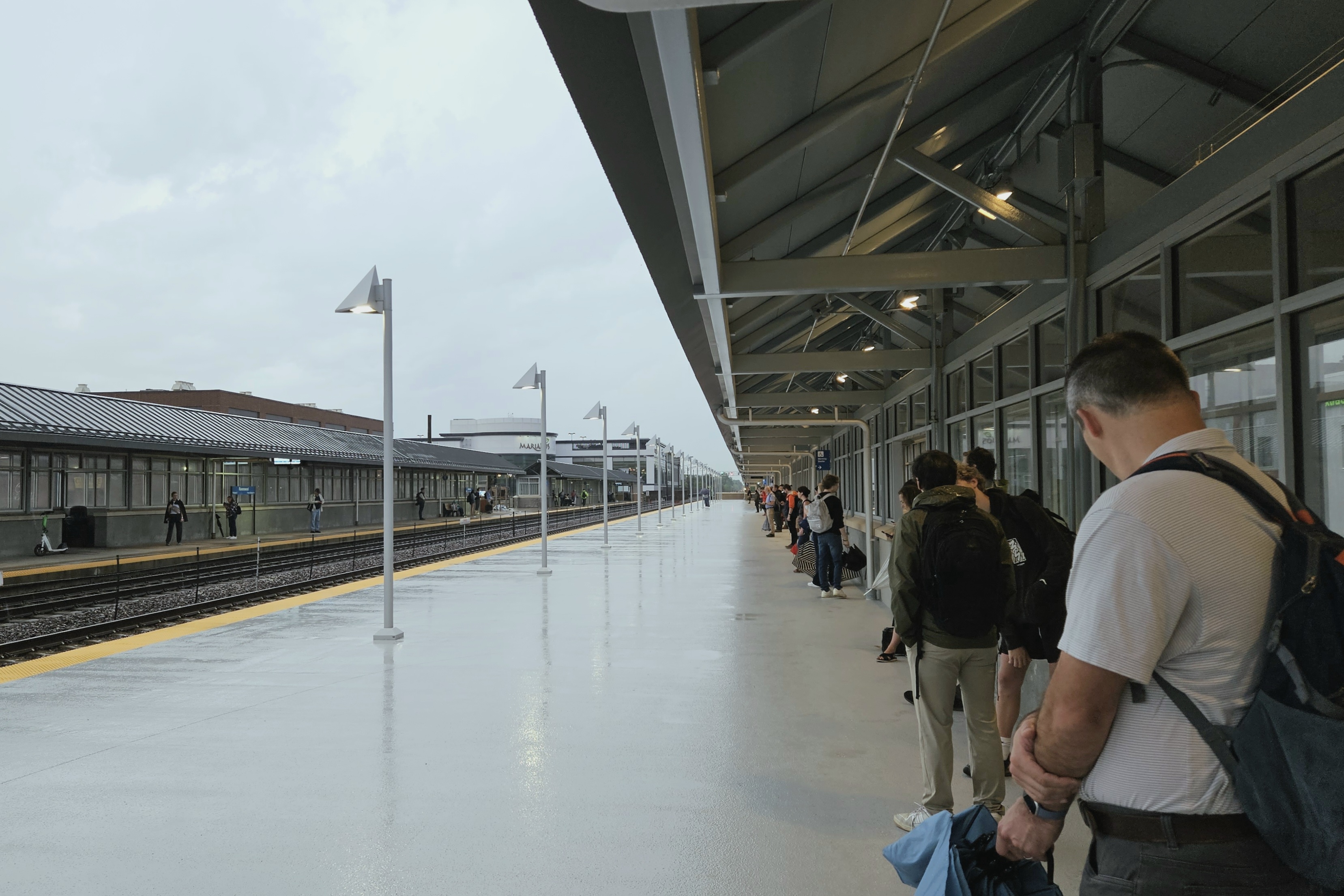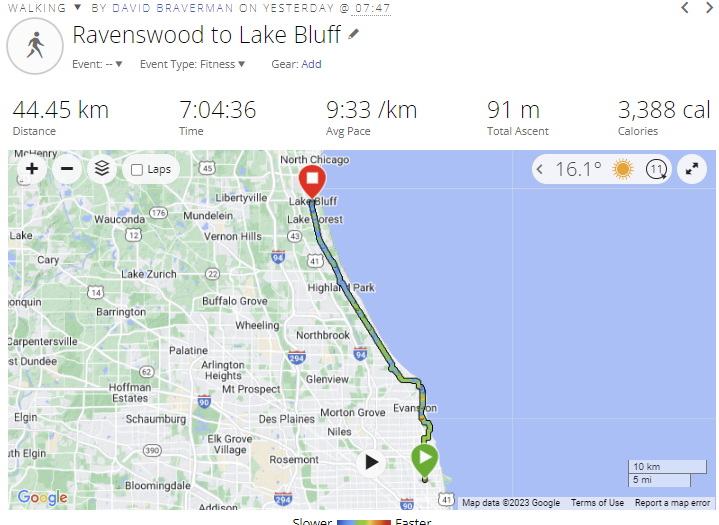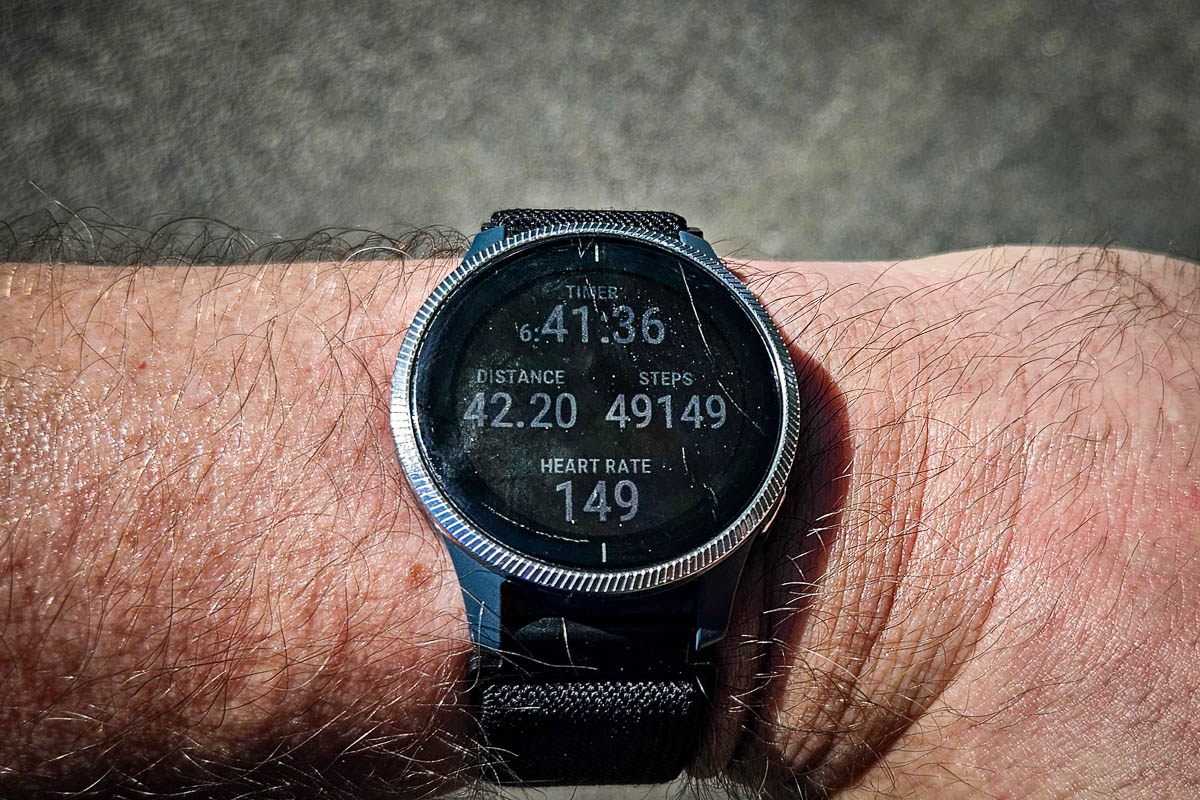It never stops, does it? And yet 100 years from now no one will remember 99% of this:
- A group of psychiatrists warned a Yale audience that the XPOTUS has a "dangerous mental illness" and should never get near political office again. Faced with this obvious truth, 59% of Republicans said they'd vote for him in 2024.
- Timothy Noah looks at the average age of the likely nominees for president next year (79) and the average age of the US Senate (60-something) and concludes our country needs a laxative. (Literally so in millions of cases.) Good thing US Representative Nancy Pelosi (D-CA) said she'll run again next year, after she turns 84. Unfortunately, while I agree in principle with Andrew Sullivan's desire to see President Biden "leave the stage," all the alternatives seem worse to me.
- Senate Majority Whip Dick Durbin (D-IL, age 78) has gotten some pushback from an even bigger dick, Justice Samuel Alito (R-$), because the Senator said it would look unethical if the Justice participated in a case involving a reporter who interviewed the Justice about his unethical behavior. But Samuel says he was ethical; and, sure, he is an honourable man.
- Adolescent narcissist Elon Musk cut Internet coverage to the Ukrainian armed forces just as it started a surprise attack against Russia's Black Sea fleet, apparently at the behest of a Russian official. Josh Marshall calls this clear and convincing evidence that "[y]ou simply can’t have critical national security infrastructure in the hands of a Twitter troll who’s a soft touch for whichever foreign autocrat blows some smoke up his behind. But that's what we have here."
- The Federal Transit Administration has finally committed $2 bn to expanding Chicago's Red Line subway to 130th St., a project first proposed in (checks notes) 1969. And who says the United States has the worst public transit funding in the developed world, other than all the urbanists who have ever studied the problem?
- What do you get when you cross ChatGPT with Google Assistant (or Alexa or Siri)? Don't worry, Bruce Schneier says we'll find out soon enough.
- "Boundaries" has a specific, limited meaning in psychology, not even close to the way most people use the word: "while the proliferation of therapeutic terms has given people access to necessary mental health tools, people may overgeneralize concepts such as boundaries and triggers, and use them to rationalize certain behaviors."
Finally, Guinness set the opening date for its new brewery in Chicago's Fulton Market district: Thursday September 28th. The Brews and Choos Project will visit soon thereafter.
Today's weather feels like we might have real fall weather soon. Today's XKCD kind of nails it, too—not the weather, but the calendar.
In addition to nice weather, we have a nice bit of elected-official hypocrisy, too: the president of the Chicago Teachers Union got caught sending her son to a private school, and giving a really crappy explanation for it.
In other news:
- A jury took all of four hours to convict right-wing intellectual grifter Peter Navarro of contempt of Congress for ignoring the January 6th Committee's subpoena.
- Josh Marshall yawns at attempts to have the XPOTUS barred from the ballot on 14th Amendment grounds, even while conceding that's exactly what the section 4 of the Amendment is for.
- Even though they've attacked abortion rights, sex education, books and movies that feature independent women, and pretty much anything that empowers women and girls, the not-at-all-misogynist Republican Party now wants to end no-fault divorce, allowing as it does women to leave the "covenant" they made with their abusers.
- Fulton County District Attorney Fani Willis told US Representative and contender for "Dumbest Person in Congress" Jim Jordan (R-OH) to go—sorry, she essentially said "bless your heart" in a delightful response to his threats of Congressional oversight.
- Julia Ioffe looks at the increasing cynicism of Africans and their rekindled affection for violent coups d'état.
- Veteran writer Tom Fontana ("St Elsewhere", "Oz," "Homicide: Life on the Street") reflects on his 4th writers strike in 40 years, and how pissed off he is.
- Strong Towns highlights a mapping tool to demonstrate how much of your city comprises parking lots. Unless you live in New York, San Francisco, San Juan, Washington, or Chicago, it's pretty grim.
- The National Hurricane Center warns that Hurricane Lee will reach category 5 before dissipating, but fortunately looks likely to miss more-populated areas—though Puerto Rico could get tropical storm winds early Sunday morning.
- National Geographic profiles Ann McKee's extraordinary work researching chronic traumatic encephalopathy (CTE), which cripples and kills US footballers more than people admit.
Finally, an old friend traveling back from Burning Man to Montreal plans to crash at my place on Saturday evening. I have two days to read up on the desert full of moop, Cory Doctorow's assertion that this Burn really was different, and the evidence that climate change played an outsized role in the muddy hell at Black Rock City this year.
This morning, for the first time since the inbound Ravenswood platform opened August 1st (and therefore since mid-2011), I actually got to shelter from the weather while waiting for the train:

Rain was falling, but for a few minutes, none of it fell on me. We could stand under a roof and wait for the train to arrive. Of course, since the platform was designed to accommodate a 3rd mainline track some day in the future, we still had to stand in the rain for a brief moment to get on the train, but still. I stood outside on the train platform not cursing Bruce Rauner and seven generations of his descendants.
Oh, and note to self: bring spare socks to the office.
That's just one of the absurdities that I encountered over the course of the last 24 hours:
- A prankster put up an official-looking sign declaring Loyola Beach on the north side of Chicago clothing-optional. Unfortunately no one was fooled.
- For the 15th or 20th time since its founding, critics accuse the US Navy of adapting too slowly to emerging risks in order to preserve tradition and Mississippi jobs. (Really, this comes up about every 20 years.)
- Of course, it doesn't help that we currently have no Chief of Naval Operations, Army Chief of Staff, or Marine Commandant, thanks to US Senator Tommy "Never Could Beat Alabama" Tuberville (R-AL).
- A working group that didn't include historians has proposed how sweeping changes to Chicago-area transit can help it become more like 1960s Baltimore more quickly: concentrate on "financial viability" at the expense of fast, frequent service. Because we really have learned nothing in the last 75 years.
- Illinois has become the third-largest home of data center space in part because we have a lot of office parks no one wants anymore.
Finally, Arizona continues to allow residential development as if the state has as much available water as Illinois. Because we really have learned nothing in the last 75 years.
The temperature has crept up towards 34°C all day after staying at a comfortable 28°C yesterday and 25°C Friday. It's officially 33°C at O'Hare but just a scoshe above 31°C at IDTWHQ. Also, I still feel...uncomfortable in certain places closely associated with walking. All of which explains why I'm jotting down a bunch of news stories to read instead of walking Cassie.
- First, if you have tomorrow off for Labor Day, you can thank Chicago workers. (Of course, if you have May 1st off for Labor Day, you can also thank us on the actual day that they intended.)
- A new study suggests 84% of the general population want to experience an orchestral concert, though it didn't get into how much they want to pay for such a thing. (You can hear Händel's complete Messiah on December 9th at Holy Name Cathedral or December 10th at Millar Chapel for just $50!)
- An FBI whistleblower claims Russian intelligence co-opted Rudy Giuliani in the run-up to the 2020 election—not as a Russian agent, mind you, just as a "useful idiot."
- Rapper Eminem has told Republican presidential (*cough*) candidate Vivek Ramaswamy—who Michelle Goldberg calls "very annoying"—to stop using his music in his political campaign.
- The government of Chile has promised to investigate the 3000 or so disappearances that happened under dictator Agosto Pinochet, though they acknowledge that it might be hard to find the ones thrown out of helicopters into the sea, or dropped down mine shafts. And with most of the murderers already dead of old age, it's about time.
- Julia Ioffe wonders when the next putsch attempt will get close to Moscow, now that Prigozhin seems to be dead.
- About 70,000 people continue to squelch through ankle-deep mud at Black Rock City after torrential rains at Burning Man this weekend. (I can't wait to see the moop map...)
- University of Michigan Law Professor Nicholas Bagley had a cogent explanation of why pharmaceutical companies don't want to negotiate drug prices with Medicare. (Hint: record profits.)
- Switching Chicago's pre-World War II bungalows from gas to electric heating could cut the city's GHG emissions by 14%.
- Molly White's weekly newsletter starts off with some truly clueless and entitled behavior from Sam Bankman-Fried and gets weirder.
- Zoning laws, plus the inability of the Portland, Ore., government to allow variances in any useful fashion, has condemned an entire high school to send its kids an hour away by bus while the building gets repaired, rather than just across the street to the community college many of them attend in the evenings. (Guess what skin color the kids have. Go on, guess.)
- A group of hackers compromised a Portuguese-language "stalkerware" company and deleted all the data the company's spyware had downloaded, as well as the keys to the compromised phones it came from, then posted the company's customer data online. "Because fuck stalkerware," they said.
- Traffic engineers, please don't confuse people by turning their small-town streets into stroads. It causes accidents. Which you, not they, have caused.
- Illinois had a mild and dry summer, ending just before our ferociously hot Labor Day weekend.
- James Fallows talks about college rankings, "which are marginally more encouraging than the current chaos of College Football."
Finally, I'll just leave this Tweet from former labor secretary Robert Reich as its own little monument to the New Gilded Age we now inhabit:
I did it again:

Of my three attempts to do this (2020, 2021, and 2022), this was 3rd best. Considering that last year I didn't even make it out of Evanston, it wasn't really that bad:

So even though yesterday's marathon time was 21 minutes longer than 2020 and 25 minutes longer than 2021, at least I finished. But why so slow (other than I'm getting older)?
Some clues: in 2020 and 2021, I got about 8¼ hours of sleep the night before; yesterday I woke up after only 7¼ hours of sleep. In 2020 and 2021, I started the day with Garmin Body Battery scores of 93 and 84 respectively; in 2022, it was 49, and yesterday, 67. More relevantly, as my walking partner (who does Ironman races and so never crested a heart rate of 125) pointed out, in 2020 and 2021 I actually trained for it.
Another trivium. I have a 3-year-old Garmin Venu 2, and my walking partner wore an newer Garmin Forerunner 265S and an older Forerunner 935. The 935 uses GPS only. The 265 has a dual-band chip that "intelligently" switches between GPS, Galileo, and GLONASS. My Venu 2 can use any of the three navigation satellite systems, but I had it set to GPS+GLONASS. We walked the same course at the same pace, and except for a few minutes when our watches were all paused, we were never more than 2 meters from each other, and we recorded total course times within a few seconds entirely attributable to imprecision in starting the timers.
Yet somehow, my Venu 2 logged 44.45 km (27.63 mi) for the entire walk, while hers got 43.80 km (27.22 mi) and 43.73 km (27.18 mi) respectively. There is no possibility that I walked 725 meters—almost four Chicago city blocks—farther than she did. So later this weekend, we're going to dig into the track files to figure out where I got the extra half-mile.
Regardless, the weather was about the same this year as in 2020, meaning really gorgeous:

Yes, I'm going to do it again next September. But I'll also do a few other walks next summer to prepare. And my walking partner and I plan a hike on the North Branch Trail in Ocotober that ends not with a brewery but with pizza.
Meteorological autumn begins at midnight local time, even though today's autumn-like temperatures will give way to summer heat for a few days starting Saturday. Tomorrow I will once again attempt the 42-kilometer walk from Cassie's daycare to Lake Bluff. Will I go 3-for-4 or .500? Tune in Saturday morning to find out.
Meanwhile:
- Quinta Jurecic foresees some problems with the overlapping XPOTUS criminal trials next year, not least of which is looking for a judicial solution to a political problem.
- Even though I prefer them to rabbits, even I can see that Chicago has a rat problem.
- Pilot Patrick Smith laments the endless noise in most airport terminals, but praises Schiphol for its quiet. (Yet another reason to emigrate?)
Finally, it seems like anyone with a valid credit card number (their own or someone else's) can track the owner of that credit card on the New York City subway. I wonder how the MTA will plug that particular hole?
Private railroad operator Brightline has started modestly-high-speed service in South Florida, and has agreements in place to start Los Angeles to Las Vegas service by the end of the decade:
Launching with no federal help, the modern debut of private passenger rail connecting two major metropolitan areas will come to fruition when Brightline riders arrive in Orlando from downtown Miami. The Federal Railroad Administration expects to sign off within days, triggering a three-week testing period before Brightline carries passengers. The company will then set its sights on a $12 billion high-speed railway from Las Vegas to Southern California, a massive undertaking that could put trains traveling at 300 km/h on America’s tracks by 2028.
After operating much like a commuter service through South Florida, the Orlando station will be the nation’s first non-Amtrak passenger train connection between two metro areas in four decades — a project with nearly $6 billion in private investment. Although not a true high-speed operation, the Brightline Florida service will surpass speeds of 200 km/h in some areas — the nation’s fastest train outside the D.C.-Boston region.
Five years after Brightline opened its 67-mile service between Miami and West Palm Beach, passengers fill the five-car trains for sporting events and festivals while commuters use it to get to jobs. Students receive discounted passes for educational excursions.
Brightline uses business tycoon Henry Flagler’s original Miami train station and his Florida East Coast Railway, built in the late 1880s. The station had fallen into disrepair and was surrounded by parking lots. The raised platform is now the hub of 1.5 million square feet of development, with office, commercial and residential spaces built by Brightline’s owner.
The 425 km electrified rail line from Las Vegas to Rancho Cucamonga, where it would connect to downtown Los Angeles via commuter train, is estimated to cost $12 billion — three times the price tag envisioned in the mid-2000s. Brightline submitted a 4,000-page application in April for a $3.75 billion federal grant from the infrastructure law.
If you can get from LA to Vegas in 2 hours, you can charge more than the airlines charge, but you can also charge less. That's about the same distance as Paris to Lyon, which the TGV currently makes in about that time, for about €50 in second class. And an electric train over that distance produces a fraction of greenhouse gasses per passenger than a car or airplane.
Notice that this can only happen with massive Federal subsidies. But that's exactly how all major transportation projects work in the US. Remember the Interstate Highway System, that provided some $500 billion (2023 dollars) in subsidies over 35 years for cars? Not to mention all the other road projects that gave us the ugliest infrastructure in the history of the world.
I hope people use these trains. And I'm really waiting for my 40-minute Chicago-to-Milwaukee train.
Not Just Bikes celebrates 5 years living in the Netherlands by raving about how the Netherlands' anti-car development patterns make just about every city in the country nicer to live than just about anywhere in North America:
I'm about 3/4 the way through Nicholas Dagen Bloom's The Great American Transit Disaster, having just finished the chapter on how Detroit's combination of racism, suburban/urban hostility, lack of vision, and massive subsidies for car infrastructure while starving public transit gave us the hollowed-out hellscape the city has become. This, after reading the chapter on how Atlanta's combination of racism, suburban/urban hostility, lack of vision, and massive subsidies for car infrastructure while starving public transit gave us the depressing echo of its former glory the city has become. And the chapter on how Chicago's combination of racism, suburban/urban hostility, and massive subsidies for car infrastructure almost—but not quite—overcame the city's history as the country's largest railroad hub with rail-driven suburban development along the Chicago & North Western and Chicago, Burlington & Quincy railroad lines.
Sigh.
I'm nowhere near retiring. And even though I work for an international company, reporting up to the London office, my team are 100% Chicago-based for the time being. But when I'm old and decrepit 40 years from now, I imagine getting around a country that cares about its public transit might be easier than even one of the most transit-friendly cities in North America.
I tried something different yesterday after watching Uncle Roger's stab at adobo:

Ng's basic outline worked really well, and I got close to what I had hoped on the first attempt. Next time I'll use less liquid, a bit more sugar, a bit less vinegar, and a bit more time simmering. Still, dinner last night was pretty tasty.
Much of the news today, however, is not:
- US District Judge Tanya Chutkan set the XPOTUS's Federal criminal trial for next March 4th, two years earlier than he wanted it.
- Writing for The Guardian, Margaret Sullivan blasts Republican presidential wannabe Vivek Ramaswamy as "a demagogue in waiting," and a distressing preview of Millennial politicians.
- The MiG pilot who ejected during an airshow on August 13th blamed the non-flying observer in the back seat for pulling the ejection cord on his own.
- Chicago has struggled for 15 or more years to get critical repairs to our international dock on the South Side.
- Elizabeth Spiers has a pretty good idea why Michael Oher, subject of Michael Lewis's 2006 book The Blind Side and the 2009 film of the same name, is pissed off at the white family that didn't actually adopt him.
Finally, via Bruce Schneier, a couple of kids with $30 worth of radio equipment managed to stop 20 trains in Poland by exploiting a mind-boggling weakness in Polish train dispatching equipment. Despite some media sources calling this a "cyber attack," it was nothing of the sort. The instructions for how to do this have existed for decades.